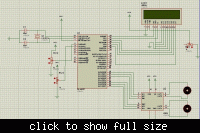SLR722
Newbie level 4
i made a light tracker car and i used pic 16F877A , L 293D (motor driver), DC motor , and LDR
but unfortunately i don't know why the micro controller is always burning after work in 3 mn
but unfortunately i don't know why the micro controller is always burning after work in 3 mn
Last edited by a moderator:
